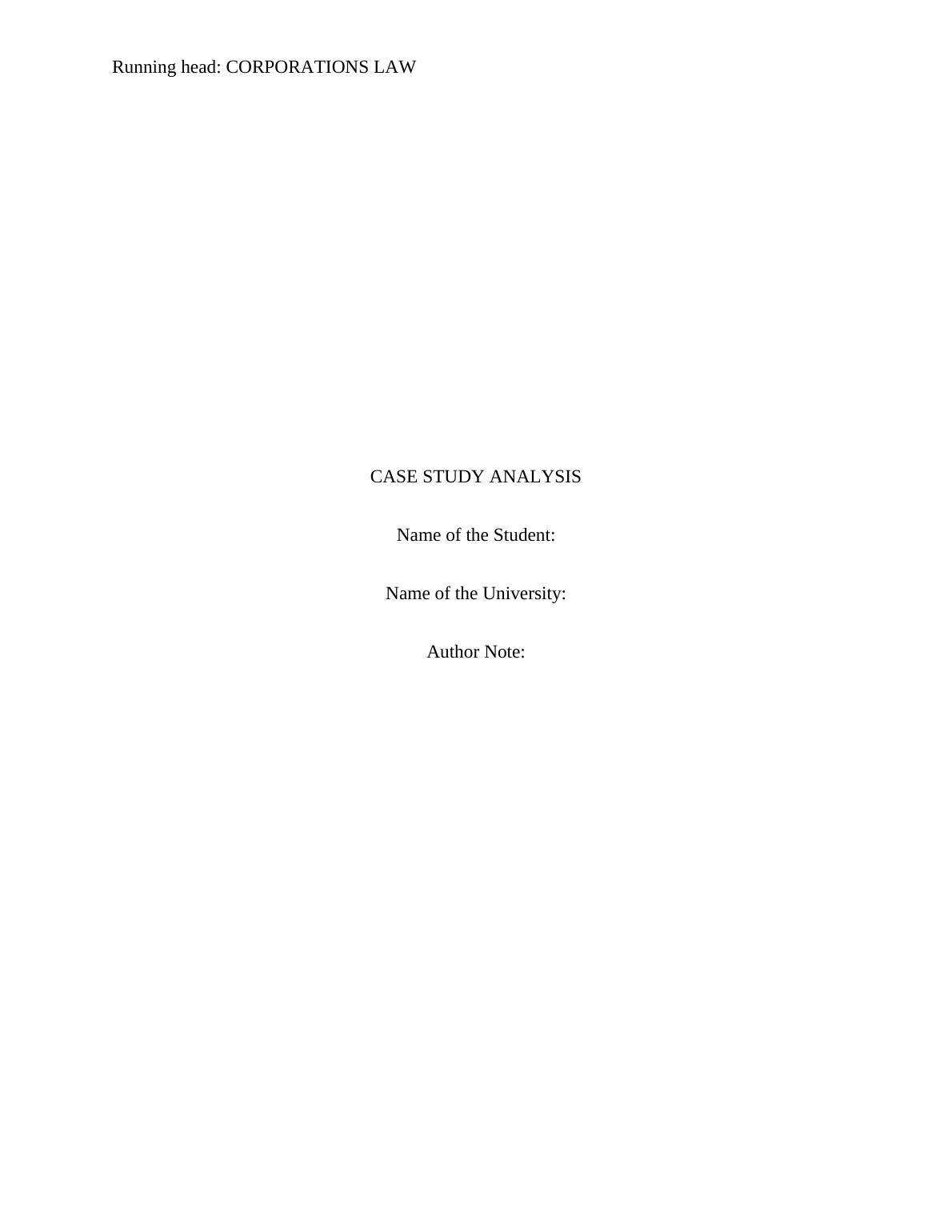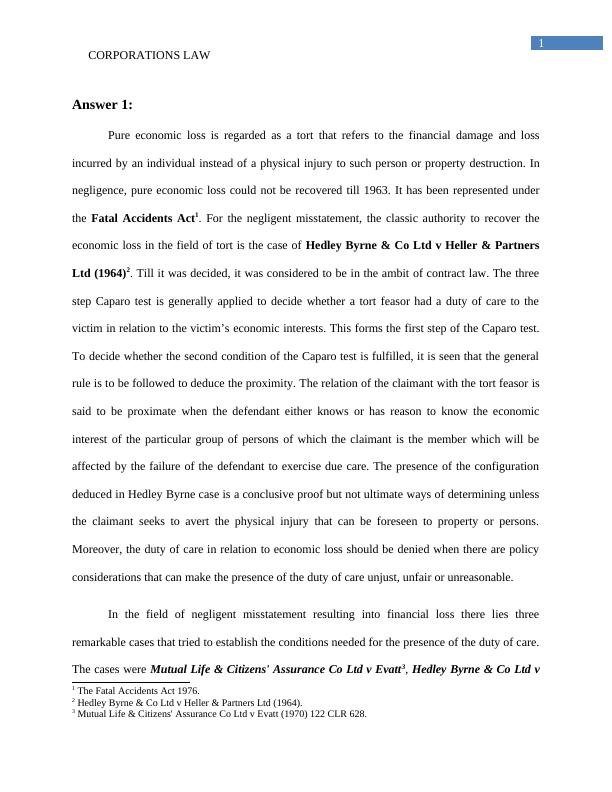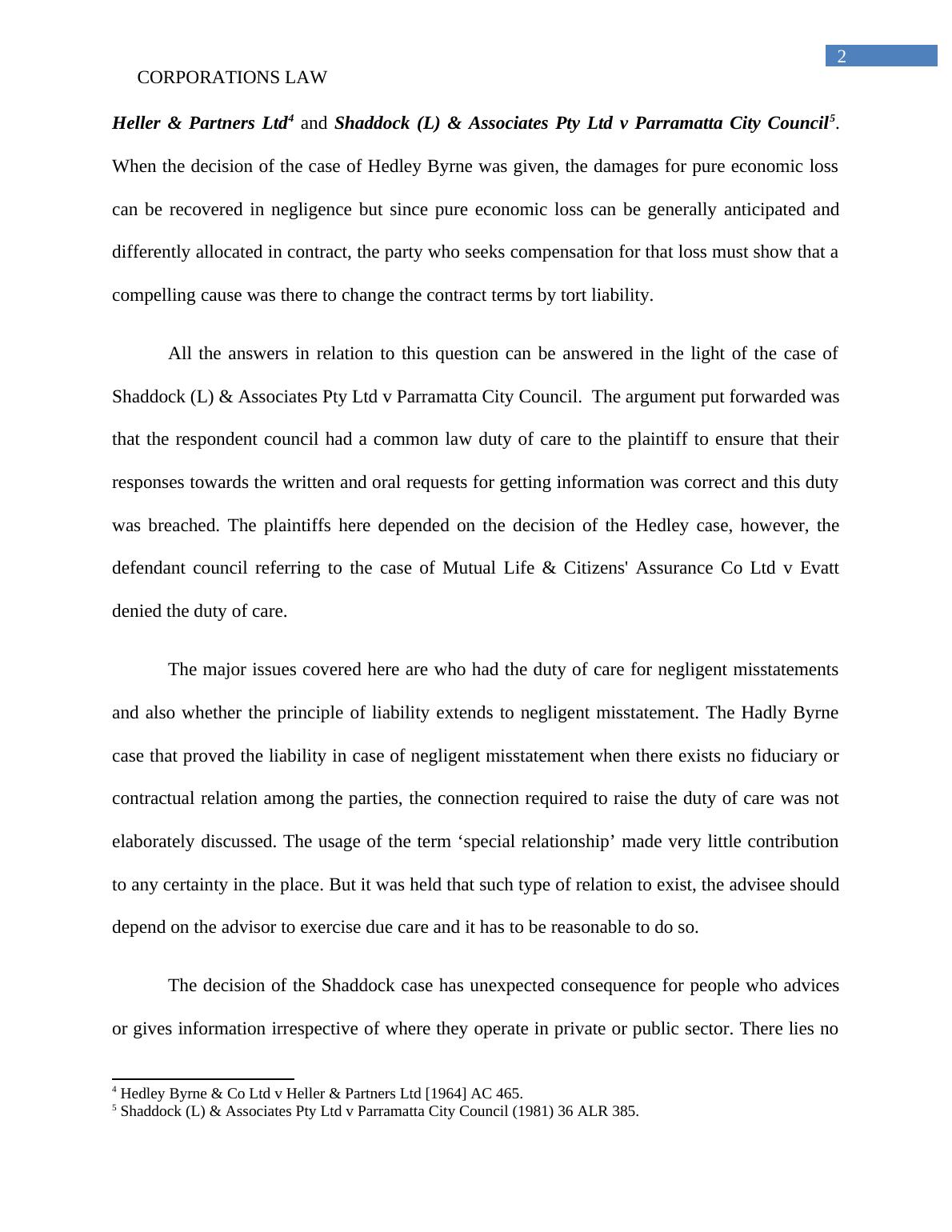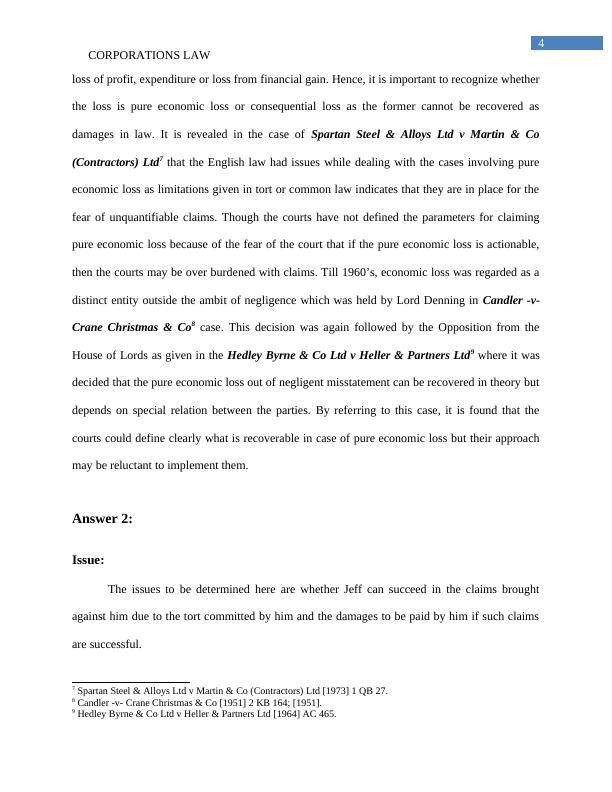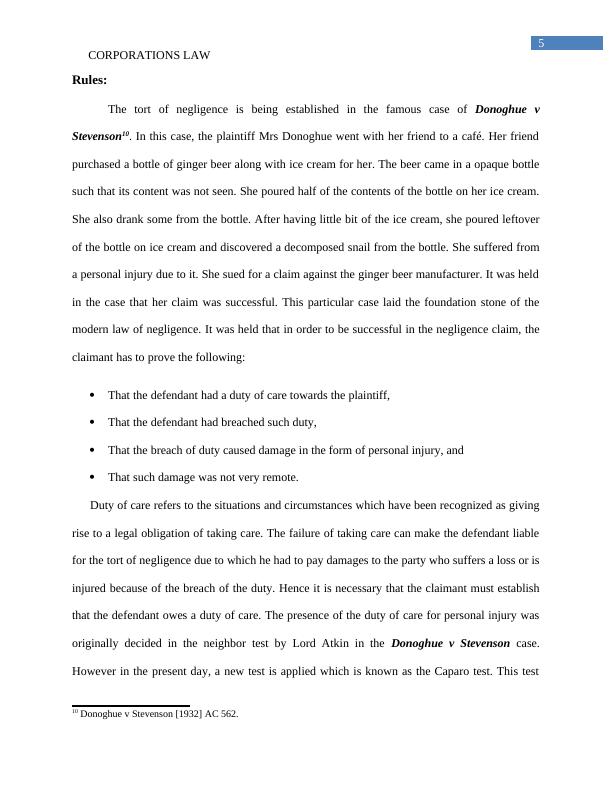Corporations Law Case Study Analysis
Explain the principles that govern whether a claimant may recover damages for pure economic loss as a result of advice and statements made by a defendant, assuming that neither the claimant nor the defendant rely on the existence of a contract between them. You should consider the concept of “assumption of responsibility” in your explanation, as well as the possibility that a defendant could try to take advantage of a non-contractual disclaimer notice. Do you think the law has achieved the correct balance between the rights of claimants and the interests of defendants?
Added on 2022-11-29
About This Document
Corporations Law Case Study Analysis
Explain the principles that govern whether a claimant may recover damages for pure economic loss as a result of advice and statements made by a defendant, assuming that neither the claimant nor the defendant rely on the existence of a contract between them. You should consider the concept of “assumption of responsibility” in your explanation, as well as the possibility that a defendant could try to take advantage of a non-contractual disclaimer notice. Do you think the law has achieved the correct balance between the rights of claimants and the interests of defendants?
Added on 2022-11-29
End of preview
Want to access all the pages? Upload your documents or become a member.

